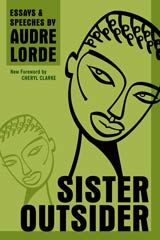 “The Bluest Eye” (1970) by Toni Morrison is a book about a black girl who dreams of having blue eyes. A short but powerful book that you will not forget. I liked it better than “Beloved” (1987), though that was good too.
“The Bluest Eye” (1970) by Toni Morrison is a book about a black girl who dreams of having blue eyes. A short but powerful book that you will not forget. I liked it better than “Beloved” (1987), though that was good too.
Here are some of the bits I liked best:
I destroyed white dolls… Thus the conversion from pristine sadism to fabricated hatred, to fraudulent love. It was a small step to Shirley Temple.
…
But the unquarreled evening hung like the first note of a dirge in sullenly expectant air. … The tiny, undistinguished days that Mrs. Breedlove lived were identified, grouped, and classed by these quarrels.
…
Hating her, he could leave himself intact.
…
It was their contempt for their own blackness that gave the first insult its teeth. They seemed to have taken all of their smoothly cultivated ignorance, their exquisitely learned self-hatred, their elaborately designed hopelessness and sucked it all up into a fiery cone of scorn that had burned for ages in the hollows of their minds – cooled – and spilled over lips of outrage, consuming whatever was in its path.
…
I felt a need for someone to want the black baby to live – just to counteract the universal love of white baby dolls, Shirley Temples and Maureen Peals.
…
We had defended ourselves since memory against everything and everybody, considered all speech a code to be broken by us, and all gestures subject to careful analysis…
…
A little black girl yearns for the blue eyes of a little white girl, and the horror at the heart of her yearning is exceeded only by the evil of fulfillment.
…
We were beautiful when we stood astride her ugliness. Her simplicity decorated us, her guilt sanctified us, her pain made us glow with health, her awkwardness made us think we had a sense of humor. … Even her waking nightmares we used to silence our own nightmares.
…
… for we were not strong, only aggressive; we were not free, merely licensed; we were not compassionate, we were polite; not good but well behaved, and hid like thieves from life. We substituted good grammar for intellect, we switched habits to simulate maturity; rearranged lies and called it truth…
…
Love is never better than the lover.
…
This soil is bad for certain kinds of flowers.
One part that I cannot find but loved is about how Hollywood stands like a giant above all of us, pushing its own strange ideas about not just beauty but love too, ideas that have no love or beauty in them. At one point the three girls are walking down the street and a huge poster of Greta Garbo looks down on them, a King Kong of white beauty.
I have had this book for years, but it was a comment by Miss Licorish to one of my posts (“There is absolutely nothing wrong with being black”) that got me to start reading it. Thank you, Miss Licorish!
See also:





